|
|
Sofia Gubaidulina (Composer) |
|
Born: October 24, 1931 - Chistopol, in the Tatar ASSR |
|
Sofia [Sofja, Sophia] Asgatovna Gubaidulina, (Russian: Софи́я Асгатовна Губайду́лина, Tatar Cyrillic: София Әсгать кызы Гобәйдуллина, Latin: Sofia Äsğät qızı Ğöbäydullina) is a Russian composer of half Russian, half Tatar ethnicity. Her music is marked by the use of unusual instrumental combinations. In Erwartung combines percussion (bongos, güiros, temple blocks, cymbals and tam-tams among others), bayan and saxophone quartet. |
|
Career |
|
Sofia Gubaidulina was born in Chistopol, in the Tatar ASSR. She studied composition and piano at the Kazan Conservatory, graduating in 1954. In Moscow she undertook further studies at the Conservatory with Nikolay Peyko until 1959, and then with Shebalin until 1963. She was awarded with Stalin-fellowship. Her music was deemed "irresponsible" during her studies in Soviet Russia, due to its exploration of alternative tunings. She was supported, however, by Dmitri Shostakovich, who in evaluating her final examination encouraged her to continue down her "mistaken path". However, she was allowed to express her modernism in various scores she composed for documentary films, including the 1968 production, On Submarine Scooters, a 70mm film shot in the unique Kinopanorama widescreen format.
In the mid-1970’s Sofia Gubaidulina founded Astreja, a folk-instrument improvisation group with fellow composers Viktor Suslin and Vyacheslav Artyomov. In 1979, she was blacklisted as one of the "Khrennikov's Seven" at the Sixth Congress of the Union of Soviet Composers for unapproved participation in some festivals of Soviet music in the West.
Sofia Gubaidulina became better known abroad during the early 1980’s through Gidon Kremer's championing of her violin concerto Offertorium. She later composed an homage to T.S. Eliot, using the text from the poet's Four Quartets. In 2000, Gubaidulina, along with Tan Dun, Osvaldo Golijov, and Wolfgang Rihm, was commissioned by the Internationale Bachakademie Stuttgart project to write a piece for the Passion 2000 project in commemoration of J.S. Bach. Her contribution was the Johannes-Passion. In 2002 she followed this by the Johannes-Ostern ("Easter according to John"), commissioned by Hannover Rundfunk. The two works together form a "diptych" on the death and resurrection of Christ, her largest work to date. Invited by Walter Fink, she was the 13th composer featured in the annual Komponistenporträt of the Rheingau Musik Festival in 2003, the first female composer of the series. Her work The Light at the End preceded L.v. Beethoven's Symphony No. 9 in the 2005 proms. In 2007 her second violin concerto In Tempus Praesens was performed at the Lucerne Festival by Anne-Sophie Mutter. Its creation has been depicted in Jan Schmidt-Garre's film Sophia - Biography of a Violin Concerto.
Since 1992, Sofia Gubaidulina has lived in Hamburg, Germany. She is a member of the musical academies in Frankfurt, Hamburg and the Royal Swedish Academy of Music. |
|
Aesthetic |
|
For Sofia Gubaidulina, music was an escape from the socio-political atmosphere of Soviet Russia. For this reason, she associated music with human transcendence and mystical spiritualism, which manifests itself as a longing inside the soul of humanity to locate its true being, a longing she continually tries to capture in her works. These abstract religious and mystical associations are concretized in Gubaidulina's compositions in various ways. Gubaidulina is a convinced Russian-Orthodox believer. The influence of electronic music and improvisational techniques is exemplified in her unusual combination of contrasting elements, novel instrumentation, and the use of traditional Russian folk instruments in her solo and chamber works, such as De profundis for bayan, Et expecto- Sonata for bayan, and In croce for cello and organ or bayan. The koto, a traditional Japanese instrument is featured in her work In the Shadow of the Tree, in which one solo player performs three different instrument - Koto, Bass Koto, and Chang. The Canticle of the Sun is a cello concerto/choral hybrid, dedicated to Rostropovich. The use of the lowest possible registers on the cello opens new possibilities for the instrument while the limited use of chorus also adds a mystical ambience to the work.
Another influence of improvisation techniques can be found in her fascination with percussion instruments. She associates the indeterminate nature of percussive timbres with the mystical longing and the potential freedom of human transcendence.
She was also preoccupied by experimentation with non-traditional methods of sound production, and as already mentioned, with unusual combinations of instruments, i.e. Concerto for Bassoon and Low Strings (1975), Detto- I - Sonata for Organ and Percussion (1978), The Garden of Joy and Sorrow for Flute, Harp and Viola (1980), and Descensio for 3 Trombones, 3 Percussionists, Harp, Harpsichord/Celesta and Celesta/Piano (1981).
Sofia Gubaidulina notes that the two composers to whom she experiences a constant devotion are J.S. Bach and Anton Webern. Among some non-musical influences of considerable import are Carl Jung (Swiss thinker and founder of analytical psychology) and Nikolai Aleksandrovich Berdiaev (Russian religious philosopher, whose works were forbidden in USSR, but nevertheless found and studied by the composer). |
|
Style |
|
A profoundly religious person, Sofia Gubaidulina defines “re-ligio” as re-legato or as restoration of the connection between oneself and the Absolute. She finds this re-connection through the artistic process and has developed a number of musical symbols to express her ideals. She does it through narrower means of intervallic and rhythmic relationship within the primary material of her works, by seeking to discover the depth and mysticism of the sound, as well as on a larger scale, through carefully thought architecture of musical form.
Melodically, Gubaidulina’s is characterized by the frequent use of intense chromatic motives rather than long melodic phrases. She often treats musical space as a means of attaining unity with the divine - a direct line to God - concretely manifest by the lack of striation in pitch space. She achieves this through the use of micro-chromaticism (i.e., quarter tones) and frequent glissandi, exemplifying the lack of “steps” to the divine. This notion is furthered by her extreme dichotomy characterized by chromatic space vs. diatonic space viewed as symbols of darkness vs. light and human/mundane vs. divine/heavenly. Finally, the use of short motivic segments allows her to create a musical narrative that is seemingly open-ended and disjunct rather than smooth.
Harmonically, Gubaidulina’s music resists traditional tonal centers and triadic structures in favor of pitch clusters and intervallic design arising from the contrapuntal interaction between melodic voices. For example, in the Cello Concerto Detto-2 (1972) she notes that a strict and progressive intervallic process occurs, in which the opening section utilizes successively wider intervals that become narrower toward the last section. Rhythmically, Gubaidulina places significant stress on the fact that temporal ratios should not be limited to local figuration; rather, the temporality of the musical form should be the defining feature of rhythmic character. As Gerard McBurney states:
In conversation she is most keen to stress that she cannot accept the idea (a frequent post-serial one) of rhythm or duration as the material of a piece. . . . To her, rhythm is nowadays a generating principle as, for instance, the cadence was to tonal composers of the Classical period; it therefore cannot be the surface material of a work. . . . She expresses her impatience with Messiaen, whose use of rhythmic modes to generate local imagery, she feels, restricts the effectiveneof rhythm as an underlying formal level of the music.
To this end, Gubaidulina often devises durational ratios in order to create the temporal forms for her compositions. Specifically, she is prone to utilizing elements of the Fibonacci sequence or the Golden Ratio, in which each succeeding element is equal to the sum of the two preceding elements (i.e., 0, 1, 1, 2, 3, 5, 8, etc.). This numerical layout represents the balanced nature in her music through a sense of cell multiplication between live and non-live substances. She firmly believes that this abstract theory is the foundation of her personal musical expression. The “Golden Ratio “between the sections are always marked by some musical event, and composer explores her fantasy fully in articulating this moments.
The first work in which Sofia Gubaidulina experiments with this concept of proportionality is Perceptions for Soprano, Baritone, and Seven String Instruments (1981, revised 1983-1986). The 12th movement, “Montys Tod” (Monty’s Death), uses the Fibonacci series in its rhythmical structure with the number of quarter notes in individual episodes corresponding to numbers from Fibonacci series.
In the early 1980’s, she began to use the Fibonacci sequence as a way of structuring the form of the work. The sequence was especially appealing because it provides a basis for composition while still allowing the form to "breathe". It plays a prominent role in such pieces as Perception, Im Anfang war der Rhythmus, Quasi hoketus and the symphony Stimmen... Verstummen...). Later the Lucas and Evangelist series, sequences derived from that of Fibonacci, were added to her repertoire. |
|
Piano Music |
|
Gubaidulina’s entire piano output belongs to her earlier compositional period and consists of the following works: Chaconne (1962), Piano Sonata (1965), Musical Toys (1968), Toccata-Troncata (1971), Invention (1974) and Piano Concerto “Introitus” (1978). Some of the titles reveal her interest in baroque genres and the influence of J.S. Bach.
The Piano Sonata is dedicated to Henrietta Mirvis, a pianist greatly admired by the composer. The work follows the classical formal structure in 3 movements: Allegro (Sonata form), Adagio, and Allegretto. Four motives (pitch sets) are utilized throughout the entire sonata, which also constitute the cyclical elements upon which the rhetoric of the piece is constructed. Each motive is given a particular name: “spring”, “struggle”, “consolation,” and “faith.”
There are two elements in the primary thematic complex of the first movement: (1) a “swing” theme, characterized by syncopation and dotted rhythms and (2) a chord progression, juxtaposing minor and major seconds over an ostinato pattern in the left hand. The slower secondary theme introduces a melodic element associated with the ostinato element of the previous theme. In the development section, these sets are explored melodically, while the dotted rhythm figure gains even more importance. In the recapitulation, the chord progression of the first thematic complex is brought to the higher registers, preparing the coda based on secondary theme cantabile element, which gradually broadens. The second movement shifts to a different expressive world. A simple ternary form with a cadenza - AB (cadenza) A, the B section represents an acoustic departure as the chromatic figurations in the left hand, originating in section A, are muted. In the cadenza the performer improvises within a framework given by the composer, inviting a deeper exploration of the secrets of sound. It consists of two alternating elements - open-sounding strings, stroke by fingers, with no pitch determination, and muted articulation of the strings in the bass register - separated by rests marked with fermatas. The third movement is constructed of 7 episodes, in which there is a continuous liberation of energy accumulated during the previous movement.
Musical expression in this work is achieved through a variety of means. Rhythm is a very important element in the construction of the work, articulating a distinct rhetoric, as well as in the development of the musical material. Exploration of a wide range of sounds, within the possibilities of the instrument, involving both traditional and nontraditional methods of sound productions are another important mean.
Some examples of the nontraditional sounds produced are a glissando performed with a bamboo stick on the piano pegs against a cluster performed on the keyboard, placing the bamboo stick on vibrating strings, plucking the strings, glissando along the strings using fingernail, touching the strings creating a muted effect.
Two distinct aspects of the sonata—the driving force and the meditative state - can be seen through the architecture of the work as portraying the image of the cross. The first movement is related to the “horizontal” line, which symbolizes human experience while the second movement reflects the “vertical” line, which represents man’s striving for full realization in the Divine. The meeting point of these two lines in music happens at the end of second movement, and that reflects transformation of the human being at crossing this two dimensions. The third movement “celebrates the newly obtained freedom of the spirit”. |
|
Awards and Recognition |
|
Sofia Gubaidulina has received the Prix de Monaco (1987), the Premio Franco Abbiati (1991), the Heidelberger Künstlerinnenpreis (1991), the Russian State Prize (1992), the Koussevitzky International Record Award (in 1989 and 1994), the Ludwig-Spohr-Preis der Stadt Braunschweig (1995), the Kulturpreis des Kreises Pinneberg (1997), the Praemium Imperiale in Japan (1998), the Sonning Award in Denmark (1999), the Preis der Stiftung Bibel und Kultur (1999), the Goethe-Medaille der Stadt Weimar (2001), the Moscow “Silenzio“-Preis (2001), the Polar Music Prize in Sweden (2002), the Great Distinguished Service Cross of the Order of Merit of the Federal Republic of Germany (2002), the Living Composer Prize of the Cannes Classical Awards in 2003, Europäischen Kulturpreis (2005), the Russian cultural Prize “Triumph“ (2007), the Bachpreis der Freien und Hansestadt Hamburg (2007) and the Honour Prize of the Moscow Regiment and the International Council of Russian Compatriots "The Compatriot of the Year - 2007". In 2011 she was awarded a "Doctor of Humane Letters" honorary degree from University of Chicago.
In 2001 she became Honour Professor of the Kazan Conservatory, in 2004, she was elected as a foreign honorary member of the American Academy of Arts and Letters, in 2009, she became Dr. honoris causa of the Yale University. |
|
Works |
|
Orchestral:
Stimmen... Verstummen... symphony in twelve movements (1986)
The Unasked Answer (Antwort ohne Frage) collage for three orchestras (1989)
Stufen for orchestra (1992)
Figures of Time (Фигуры времени) for large orchestra (1994)
The Rider on the White Horse for large orchestra and organ (2002)
The Light of the End (Свет конца) for large orchestra (2003)
Feast During a Plague for large orchestra (2006)
Concertante:
Concerto for bassoon and low strings (1975)
Introitus concerto for piano and chamber orchestra (1978)
Offertorium (Жертвоприношение) concerto for violin and orchestra (1980, rev. 1982, 1986)
And: The Feast is in Full Procession (И: Празднество в разгаре) for violoncello and orchestra (1993)
Music for Flute, Strings, and Percussion (1994)
Impromptu for flute (flute and alto flute), violin, and strings (1996)
Concerto for viola and orchestra (1996)
The Canticle of the Sun of St Francis of Assisi for cello, chamber choir and percussion (1997)
Two Paths: A Dedication to Mary and Martha for two viola solo and orchestra (1998)
Im Schatten des Baumes (В тени под деревом) for koto, bass koto, zheng, and orchestra (1998)
Under the Sign of Scorpio variants on six hexachords for bayan and large orchestra (2003)
...The Deceitful Face of Hope and Despair for flute and orchestra (2005)
In Tempus Praesens concerto for violin and orchestra (2007)
Glorious Percussion concerto for percussion and orchestra (2008)
Fachwerk, concerto for bayan, peand strings (2009)
Vocal/Choral:
Phacelia, vocal cycle for soprano and orchestra based on Mikhail Prishvin's poem (1956)
Night in Memphis, cantata for mezzo-soprano, orchestra and male choir on tape (1968)
Rubaijat, cantata for baryton and chamber ensemble (1969)
Hour of the Soul poem by Marina Tsvetaeva for large wind orchestra and mezzo-soprano/contralto (1974), for percussion, mezzo-soprano, and large orchestra (1976)
Perception for soprano, baritone (speaking voices) and 7 string instruments (1981, rev. 1983, 1986)
Hommage à Marina Tsvetayeva for a cappella choir (1984)
Hommage à T.S. Eliot for sopran and octet (1987)
Jauchzt vor Gott for mixed choir and organ (1989)
Alleluja for mixed chorus, boy soprano, organ and large orchestra (1990)
Aus dem Studenbuch on a text of Rainer Maria Rilke for cello, orchestra, male choir, and a woman speaker (1991)
Lauda for alto, tenor, baritone, narrator, mixed choir, and large orchestra (1991)
Jetzt immer Schnee (Теперь всегда снега) on verses of Gennadi Aigi for chamber ensemble and chamber choir (1993)
Galgenlieder à 3 fifteen pieces for mezzo-soprano, percussion, and contrabass (1996)
Galgenlieder à 5 fourteen pieces for mezzo-soprano, flute, percussion, bayan, and contrabass (1996)
Johannes-Passion for soprano, tenor, baritone, bass, two mixed choirs, organ, and large orchestra (2000)
Johannes-Ostern for soprano, tenor, baritone, bass, two mixed choirs, organ, and large orchestra (2001)
Chamber/Ensemble:
Quintet for piano, two violins, viola, and violoncello (1957)
Piano Sonata (1965)
Musical Toys fourteen piano pieces for children (1969)
Vivente - Non Vivente for electronics (1970)
Concordanza for chamber ensemble (1971)
String Quartet No. 1 (1971)
Ten Preludes for solo cello (1974)
Rumore e silenzio for percussion and harpsichord (1974)
Sonata for double bass and piano (1975)
Hell und Dunkel for organ (1976)
Two Ballads for two trumpets and piano (1976)
Trio for three trumpets (1976)
Lied ohne Worte for trumpet and piano (1977)
Duo sonata for two bassoons (1977)
Lamento for tuba and piano (1977)
Misterioso for 7 percussionists (1977)
In Croce for cello and organ (1979), for bayan and cello (1991)
Jubilatio for 4 percussionists (1979)
Garten von Freuden und Traurigkeiten for flute, viola, harp and narrator (1980)
Descensio for 3 trombones, 3 percussionists, harp, harpsichord and piano (1981)
Rejoice, sonata for violin and cello (1981)
Sieben Worte for cello, bayan, and strings (1982)
Quasi hoquetus for viola, bassoon, and piano (1984)
String Quartet No. 2 (1987)
String Quartet No. 3 (1987)
String Trio (1988)
Hörst Du uns, Luigi? Schau mal, welchen Tanz eine einfache Holzrassel für Dich vollführt (Слышишь ты нас, Луиджи? Вот танец, который танцует для тебя обыкновенная деревянная трещотка) for six percussionists (1991)
Gerade und ungerade (Чет и нечет) for seven percussionists, including cymbalom (1991)
Silenzio for bayan, violin, and cello (1991)
Tartarische Tanz for bayan and two contrabass (1992)
Dancer on a Tightrope (Der Seiltänzer) for violin and string piano (1993)
Meditation über den Bach-Choral "Vor deinen Thron tret' ich hiermit" for harpsichord, two violins, viola, cello, and contrabass (1993)
Рано утром перед пробуждением for three 17-string Japanese bass kotos and four 13-string Japanese kotos (1993)
Allegro Rustico: Klänge des Waldes for flute and piano (1993)
String Quartet No. 4 with tape (1993)
In Erwartung (В ожидании) for saxophone quartet and six percussionists (1994)
Ein Engel for alto and double bass (1994)
Aus der Visionen der Hildegard von Bingen for alto (1994)
Quaternion for cello quartet (1996)
Ritorno perpetuo for harpsichord (1997)
Risonanza for three trumpets, four trombones, organ, and six strings (2001)
Reflections on the theme B-A-C-H for string quartet (2002)
Mirage: The Dancing Sun for eight violoncelli (2002)
On the Edge of Abyss for seven violoncelli and two waterphones (2002)
Verwandlung (Transformation) for trombone, saxophone quartet, violoncello, double bass, and tam-tam (2004)
The Lyre of Orpheus for violin, percussion, and strings (2006)
Ravvedimento for cello and quartet of guitars (2007)
Pentimento, an arrangement of 'Ravvedimento' for double-bass and three guitars (2007)
Repentance, an arrangement of 'Ravvedimento' for cello, double-bass and three guitars (2008)
Labyrinth, for 12 celli (2011)
Film scores:
Adventures of Mowgli (1967-1971)
The Cat Who Walked by Herself (1988)
A more complete list of her scores for animated films may be found on her profile at
Animator.ru. |
|
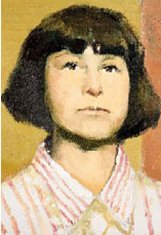
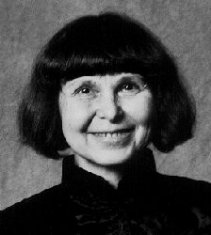
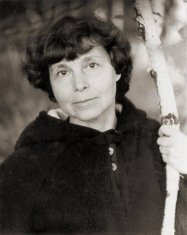
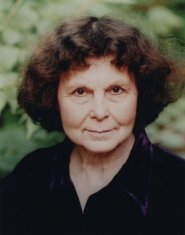
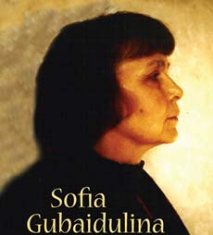
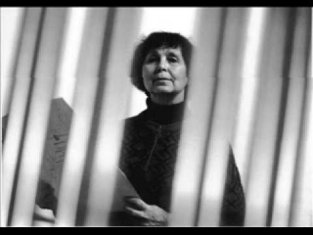
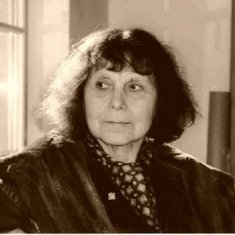
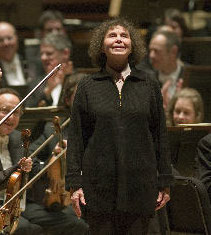
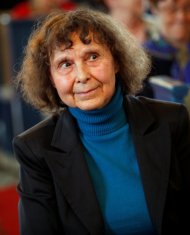
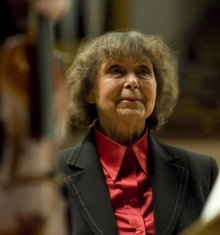
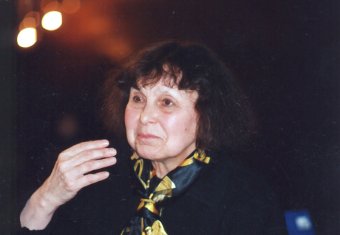
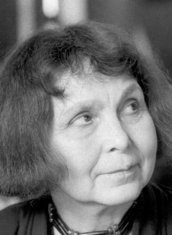
|
|
Source: Mostly Wikipedia Website (September 2012)
Contributed by Aryeh Oron (October 2012) |
|
Sofia Gubaidulina : Short Biography | Bach-inspired Piano Works: Works | Recordings | Other Arrangements/Transcriptions: Works | Recordings |
|
Links to other Sites |
|
Sofia Gubaidulina (G. Schirmer Inc.)
Sofia Gubaidulina (Boosey & Hawkes)
Composer Sofia Gubaidulina - A Conversation with Bruce Duffie |
Sofia Gubaidulina (Wikipedia)
Sofia Gubaidulina (Naxos)
Sofia Gubaidulina (Classical Composers Database) |
|
Bibliography |
| |
|
|